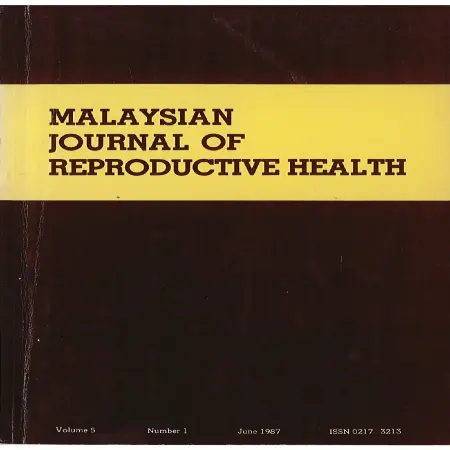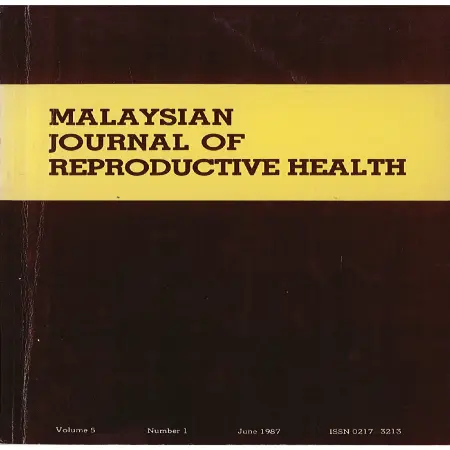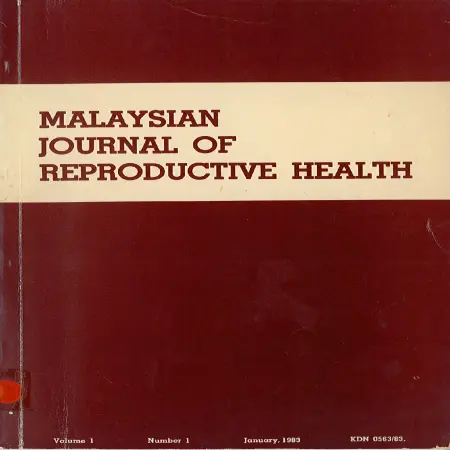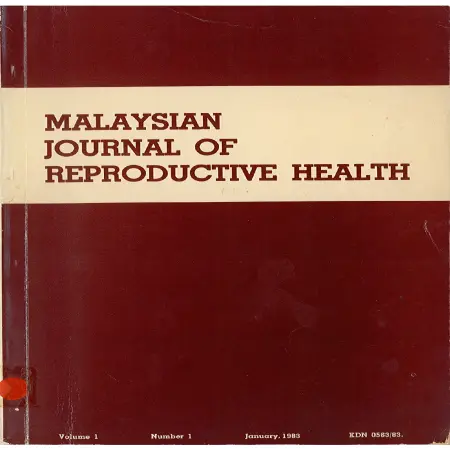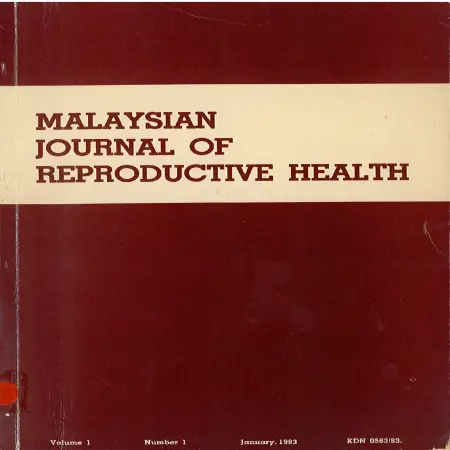Browse by Division/Agency
Results for Division/Agency : "LPPKN - National Population and Family Development Board, Malaysia: Human Reproductive Division"
|
|
A Study on health status of youth in Malaysia
Item Type: Research Report
Editor:
Year: 00/00/2010
Abstract: This study analyzed health screening of 22,840 youths, who were distributed equally by ethnicity and camp sessions. Based on the analysis, 21.6% of youths were underweight, 18.1% pre-obese and 10.3% obese, with 0.3% perceived having body image disorders. With regards to sexual and reproductive health issues, 39.6% admitted viewing pornographic materials, 28.5% practiced masturbation, 6.5% engaged in premarital sexual relationships, 5.5% had multiple partners and 1.6% had been involved in homosexual relationships. History of abortion was discovered by 0.5% of the respondents. Almost a quarter of the youths were smokers, while 8.7% had consumed alcohol and 1.4% admitted taking drugs. The study also revealed that 6.2% of respondents reported to have past involvement in bully and 14.1% in fight. About 7.1% of the respondents revealed they had been physically abused while 1.2% of them had been sexually abused. Mental health problems were noted in 27.5% of the youths, with depression in 9.8% of the youths, anxiety in 20.7% and suicidal ideation in 11.8%. Psycho-social problems such as substance use, antisocial behavior, physical/sexual abuse and mental health problems among youth are interrelated with common risk and protective factors. Management of psycho-social problems in youths should be holistic; looking into risk and protective factors. Programs and interventions should focus on strengthening of protective factors among youth such as family connectedness and religiosity.
|
|
|
|
|
|
A role for cholesterol synthesized de novo by human umbilical cord
Item Type: Article
Editor:
Year: 00/12/1990
Abstract: We have previously shown that the human umbilical cord in-vitro possess the ability to synthesize isocaproic acid and presumbly pregnenolone from cholesterol. Here, we examined the ability of the cord to synthesize cholesterol from acetate. Homogenates of umbilical cord (36-41 weeks gestation)obtained following spontaneous vaginal delivery from uncomplicated pregnancies (age 22-31 years) were incubated with [2-14C] acetate. Using the reverse-isotope dilution procedure, cholesterol was isolated and characterized as [14C] cholesterol acetate. Confirmation of identity of newly synthesized cholesterol was obtained after recrystallisation with added non-radioactive cholesterol acetate as standard. The rate of 14C incorporation is small but definite. The results indicate that the homogenates of human term umbilical cord contain the enzymes responsible for the conversion of [2-14C] acetate to [14C] cholesterol. It is suggested that cholesterol synthesized de novo can serve as a percursor for progesterone synthesis in-vivo.
|
|
|
|
|
|
A five-year review of diagnostic laparoscopy and female sterilizations in 52 centers in Malaysia
Item Type: Article
Editor:
Year: 00/06/1987
Abstract: Doctors participating in the Laparoscopy Program of the National Population and Family Development Board, Malaysia return data on all cases of diagnostic laparoscopy and female sterilizations carried in their centres. Data on 2,179 cases of diagnostic laparoscopy and 4,740 cases of female sterilizations for the period 1981-1985 are analysed. States with the highest return rates are Kuala Lumpur Federal Territory, Negeri Sembilan, Johor and Perak. The Specialist Centre of the Board alone accounted for one-third of the cases. Data for female sterilizations are further analysed. Complication rates for laparoscopy and minilaparotomy techniques are low at between 0.5 to 2.5 per 100 procedures. All doctors providing such services should be encouraged to participate in this Program and submit data in order to improve and learn from this Program.
|
|
|
|
|
|
A prospective study of the acceptability of today vaginal contraceptive sponge among Malaysian women
Item Type: Article
Editor:
Year: 00/06/1987
Abstract: Fifty volunteers were selected in a two month prospective study to evaluate the acceptability of the Today vaginal sponge contraceptive among Malaysian women. One participant developed allergic reaction to the sponge and was taken off at an early stage of the study. Fourty- nine participants completed one month follow-up.Thirteen subjects discontinued for various reasons which are related and not related to the sponge. The remaining 36 participants completed the study. Few side effects were observed among the sponge users who completed the trial. One subject complained that the Loop of the sponge hurt her husband's penis. Most of the women who are on the sponges claimed that sexual intercourse is no longer messy. Four subjects claimed that the sponges pontentiated sexual feeling to their male partners. The sponge is generally accepted by the study group, which suggest that the general impression 'Asian Women abhor any form of vaginal contraception' is not totally correct. It is suggested that the contraceptive efficacy of the sponge be evaluated among our women in the future.
|
|
|
|
|
|
Apparent benefit from corticosteroids in bronchopulmonary dysplasia: a case report
Item Type: Article
Editor:
Year: 00/00/1984
Abstract: A case of bronchopulmonary dysplasia complicating the ventilatory management of respiratory distress syndrome is described. The diagnosis was documented by typical clinical radiological and cytopathologic criteria. The infant's abrupt clinical deterioration was reversed by the use of high dosage steroids and attempt at reducing the dose of steroids initially was associated with clinical and radiological deterioration. We conclude that steroid administration seemed beneficial in our patient.
|
|
|
|
|
|
Age of biological maturity of Malaysian girls by ethnicity
Item Type: Article
Editor:
Year: 00/01/1983
Abstract: This study tries to estimate the age of biological maturity of Malaysian girls by ethnicity by employing an indirect methodology. Age at biological maturity is estimated by considering retrospective fertility and family survey data on marriage, first birth, and contraceptive use. The waiting time for the biological mature females to conceive is 3.0 months; 3.2 months among the Malays, 2.7 months among the Chinese, and 2.8 months among the Indians.The maximum age of attaining biological maturity is 20 for all ethnic groups except Indians (19 years). The expected age biological maturity at birth is 15.6 years; 15.3 years for the Malays, 15.4 for the Chinese and 14.8 years for the Indians.The mean age of attaining biological maturity coincides with the expected age of attaining biological maturity at birth.
|
|
|
|
|
|
Actinomyces-like organisms in the cervical smears of IUCD users
Item Type: Article
Editor:
Year: 00/01/1983
Abstract: Cervical smears of 128 intrauterine contraceptive device users were stained by Gram stain and screened for the presence of Actinomyces-like organisms. Actinomyces-like organisms were observed in 5.5 percent, pus cell in 20.1 percent and yeast cells in 10.2 percent of the smears examined. The average duration of insertion was 8 months. Smears of 103 controls were negative for Actinomyces-like organisms, pus cells were observed in 8.7 percent and yeasts in 4.8 percent.
|
|
|
|






